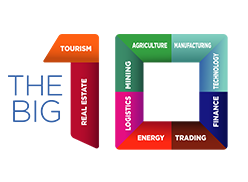In an increasingly interconnected world, Free Trade Agreements (FTAs) have become powerful tools for fostering cross-border commerce, economic integration, and regional development. By removing barriers such as tariffs, quotas, and import/export restrictions, FTAs create open markets that allow goods, services, investments, and knowledge to flow more freely between countries.
While their benefits are often discussed at a global level, the real transformation happens regionally — where local businesses adapt, innovate, and expand in response to newly accessible markets and competitive pressures. This article explores how global FTAs are impacting regional business ecosystems and contributing to broader economic development.
What Are Free Trade Agreements?
Free Trade Agreements are treaties between two or more countries that outline the terms of trade, investment, intellectual property rights, labor standards, and dispute resolution frameworks. These agreements aim to:
-
Reduce or eliminate tariffs and non-tariff barriers
-
Promote fair competition
-
Facilitate trade and investment
-
Enhance cooperation in regulatory practices
Some of the most significant FTAs include the Comprehensive and Progressive Agreement for Trans-Pacific Partnership (CPTPP), the African Continental Free Trade Area (AfCFTA), USMCA (formerly NAFTA), and EU trade deals with multiple global partners.
Key Ways FTAs Impact Regional Business
1. Market Expansion Opportunities
FTAs open up new export markets for local businesses, especially SMEs (Small and Medium Enterprises), allowing them to compete globally. For instance, under AfCFTA, African manufacturers can now sell goods across borders with fewer restrictions, tapping into a combined market of over 1.4 billion people.
2. Increased Foreign Direct Investment (FDI)
Investor confidence often rises when countries enter into FTAs, as these agreements provide legal protections and predictability. This results in increased FDI, technology transfer, and joint ventures in sectors such as manufacturing, logistics, agriculture, and services.
3. Competitive Advantage and Innovation
Exposure to global competition pushes regional companies to innovate, enhance productivity, and improve quality standards. This can lead to stronger, more competitive industries and the rise of regional champions.
4. Value Chain Integration
FTAs enable countries to participate more effectively in global and regional value chains. A product manufactured in one country might have components sourced from multiple FTA partner nations, streamlining supply chains and reducing production costs.
5. Job Creation and Skills Development
As trade and investment grow, so do employment opportunities. Sectors that benefit most from FTAs — such as logistics, manufacturing, and IT — often experience a rise in job creation and demand for skilled labor.
Regional Economic Development Outcomes
FTAs do more than boost individual businesses; they contribute to long-term regional economic transformation by:
-
Improving infrastructure (ports, roads, digital connectivity) to support cross-border trade
-
Encouraging policy reform and regulatory harmonization
-
Fostering regional cooperation and stability through economic interdependence
-
Enhancing access to goods and services for consumers, often at lower prices
For example, the EU Single Market has not only promoted trade but also fostered regional development and cohesion among member states. Similarly, the AfCFTA is projected to lift millions out of poverty and increase intra-African trade by over 50% once fully implemented.
Challenges and Considerations
While FTAs offer significant benefits, they also bring challenges:
-
Unequal gains: Some industries or regions may lose out due to increased competition.
-
Adjustment costs: Shifting production patterns can lead to job displacement in certain sectors.
-
Compliance and capacity gaps: Smaller businesses may struggle with the legal and technical requirements of new trade frameworks.
-
Political resistance: Not all stakeholders support liberalized trade, especially if short-term losses are perceived.
To maximize benefits, governments and business associations must provide training, financial support, and infrastructure investment to help businesses adapt and thrive in a free trade environment.
Conclusion
Global Free Trade Agreements are more than diplomatic tools — they are catalysts for regional economic dynamism and business growth. By lowering trade barriers and encouraging cooperation, FTAs unlock new markets, attract investment, and promote sustainable development across regions.
For businesses, understanding and leveraging FTAs can be the key to scaling operations and staying competitive in a rapidly evolving global economy. For governments, smart trade policy implementation is essential to ensuring that the benefits of open markets are broadly shared and inclusive.
Read more on The Big 10:
Sustainable Agriculture: Global Trends in Food Production and Climate-Smart Farming
Global Integration and Its Impact on the Future of Multinational Corporations
How Global Trade and Supply Chains Are Adapting to Sustainability Demands


